Chair: Bala Krishna Maddali, GGS Indraprastha University, New Delhi, India
Schedule
4 Hour Tutorials:
Monday, 05 February 2018, 10:30-12:30 and 13:30-15:30
2 Hour Tutorials:
Monday, 05 February 2018, 16:00-18:00
Monday, 05 February 2018, 10:30-12:30
Monday, 05 February 2018, 16:00-18:00
Monday, 05 February 2018, 10:30-12:30
Monday, 05 February 2018, 16:00-18:00
Details
Monday 05 February 2018, 10.30-12.30 and 13.30-15.30 (4 hours), Room 4304
Tutorial 1: Blockchain and Cryptocurrencies
Presenter: Yong Yuan, Institute of Automation, Chinese Academy of Sciences, Beijing, China

Yong Yuan received the Ph.D. degree in computer software and theory from Shandong University of Science and Technology, Shandong, China, in 2008. He joined the Institute of Automation, Chinese Academy of Sciences as a post-doctoral researcher, and became an Associate Professor since 2012. He is also the Vice President of Qingdao Academy of Intelligent Industries. His research interests include social computing, computational advertising, blockchain and smart contracts. Dr. Yuan has published one monograph, and more than 70 peer-reviewed journal or conference papers. Dr. Yuan now is the Chair of ACM Beijing Social and Economic Computing Chapter; Co-chair of IFAC Technical Committee on Economic, Business and Financial Systems (TC 9.1); Secretary-General of IEEE SMC Technical Committee on Social Computing and Social Intelligence; and also Secretary-General of CAAI Technical Committee on Social Computing and Social Intelligence. He is also an IEEE Senior Member, and Associate Editor of IEEE Transactions on Computational Social Systems, and ACTA Automatica Sinica. Dr. Yuan’s research on blockchain is the most cited and most downloaded paper of the field in China, and received the Best Paper Award from ACTA Automatica Sinica, and also the Award of FRONTRUNNER 5000: Top Articles in Outstanding S&T Journals of China. Dr. Yuan has (co-)organized 3 special issues with the theme of blockchain, and also the IEEE/IFAC International Conference on Blockchain and Knowledge Automation.
Abstract – Blockchain, as an emerging decentralized architecture and distributed computing paradigm underlying Bitcoin and other cryptocurrencies, has attracted intensive attention in both research and applications recently. Blockchain, especially powered by chain-coded smart contracts, has the full potential of revolutionizing increasingly centralized Cyber-Physical-Social Systems (CPSS) for constructions and applications, and reshaping traditional knowledge automation workflows. The key advantage of blockchain technology lies in the fact that it can enable the establishment of secured, trusted and decentralized autonomous ecosystems for various scenarios, especially for better usage of the legacy devices, infrastructure and resources. Blockchain and smart contracts can be expected to find a wide spectrum of application scenarios in CPSSs, especially the cyber-physical systems with large numbers of IoT (Internet of Things) devices. Actually, blockchain is an elegant solution to IoT, and the novel “blockchain of things (BoT)” can thus lay a solid foundation for connecting the cyber and physical worlds and establishing a decentralized autonomous BoT network. This tutorial will introduce fundamental theories, techniques and possible applications of blockchain and cryptocurrencies. Part 1 of this tutorial is an introduction to Bitcoin and other crypto-currencies. Part 2 presents a hierarchical reference model of the blockchain framework, and discusses its technical details. Part 3 examines the blockchain consensus algorithms. Part 4 discusses the integration of blockchain and IoT, and the framework of the emerging BoT technique. Part 5 lists several potential problems of blockchain. Part 6 presents an illustrative example of blockchain-based intelligent transportation systems. Part 7 concludes, and introduces the future trend of parallel blockchain.
Back to Top
Monday 05 February 2018, 10.30-12.30 and 13.30-15.30 (4 hours), Room 4205
Tutorial 2: From Research to Innovation in IoT: Why is Technology Transfer So Hard?
Presenter: Raffaele Giaffreda, Chief IoT Scientist at FBK, CREATE-NET, Italy
 Raffaele Giaffreda is a Chief IoT Scientist at FBK CREATE-NET, Italy. He worked in telecom R&D environment for the past 20 years, focusing on IoT and related technology-transfer activities for the past 6 years. In his role, he is now responsible for setting research and innovation directions, acquisition of funding and for the execution of a number of collaborative projects in the IoT domain; he is the Project Coordinator of EU H2020 AGILE (www.agile-iot.eu) and was principal investigator of EU iCore project on Cognitive IoT (13mEur, 2011-2014), besides contributing to many other collaborative initiatives internationally. Raffaele worked in Italy (for the past 10 years) and in the UK (10 years – until 2008), acquiring experience in both, corporate telco environments (R&D of BT and Telecom Italia) as well as in a small research organization (CREATE-NET before its merge in FBK) where the ability to acquire funding was key in ensuring continuity of operations. He was responsible for system integration activities in projects UNCAP and EIT Digital ESSENCE (both closed end of 2017) leading to IoT-based solutions currently being assessed for go-to-market strategy for the remote monitoring of elderly people. Raffaele is a recognized expert with a substantial record of IEEE publications and conference presentations, a patent and various book chapters and tutorials on IoT. He is an experienced speaker and chair of IoT related events, he serves as an EU reviewer, TPC in a number of international conferences and he is the Editor in Chief of the IEEE IoT Newsletter.
Raffaele Giaffreda is a Chief IoT Scientist at FBK CREATE-NET, Italy. He worked in telecom R&D environment for the past 20 years, focusing on IoT and related technology-transfer activities for the past 6 years. In his role, he is now responsible for setting research and innovation directions, acquisition of funding and for the execution of a number of collaborative projects in the IoT domain; he is the Project Coordinator of EU H2020 AGILE (www.agile-iot.eu) and was principal investigator of EU iCore project on Cognitive IoT (13mEur, 2011-2014), besides contributing to many other collaborative initiatives internationally. Raffaele worked in Italy (for the past 10 years) and in the UK (10 years – until 2008), acquiring experience in both, corporate telco environments (R&D of BT and Telecom Italia) as well as in a small research organization (CREATE-NET before its merge in FBK) where the ability to acquire funding was key in ensuring continuity of operations. He was responsible for system integration activities in projects UNCAP and EIT Digital ESSENCE (both closed end of 2017) leading to IoT-based solutions currently being assessed for go-to-market strategy for the remote monitoring of elderly people. Raffaele is a recognized expert with a substantial record of IEEE publications and conference presentations, a patent and various book chapters and tutorials on IoT. He is an experienced speaker and chair of IoT related events, he serves as an EU reviewer, TPC in a number of international conferences and he is the Editor in Chief of the IEEE IoT Newsletter.
Abstract – This tutorial will present lessons learnt in more than 6 years of R&D activity in the domain of Internet of Things and it will be structured in three main parts (research, development and business). More in detail, the first part will focus on existing and emerging trends for IoT as it moves out of the Gartner Hype Cycle: Edge Computing for IoT, Analytics and Cognitive IoT, Blockchains for IoT will all be covered amongst other technology oriented research challenges. The second part will illustrate what it takes to transform research ideas and demo prototypes into the development of viable solutions that address real market needs in this highly fragmented and overly-standardised domain. Focus here will be given on IoT platforms for the rapid prototyping and deployment of IoT solutions in Industrial and eHealth contexts. In the third part of the tutorial the presenter will share part of his technology transfer journey focusing on the business aspects and the economic issues one must be ready to tackle in order to bring innovation to fruition in this exciting field.
Back to Top
Monday 05 February 2018, 10.30-12.30 and 13.30-15.30 (4 hours), Room 4305
Tutorial 3: Lightweight Virtualization on IoT Edge Nodes: Unleash the Value of Container Technologies on Low-Power Devices
Presenter: Roberto Morabito, Ericsson Research Finland and Aalto University, Finland
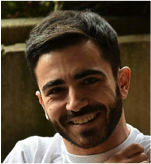 Roberto Morabito has worked for Ericsson Research Finland in the Cloud Systems and Platforms research area since May 2014. He has been involved in the already concluded FP7 Marie Curie ITN METRICS project and now in the ITEA 3 APPSTACLE (open standard APplication Platform for carS and TrAnsportation vehiCLEs) project. He has also been a Ph.D. student since September 2014 at Aalto University in the Department of Communications and Networking. In 2013, he received his Master degree in computer and telecommunications systems engineering from “Mediterranea” University of Reggio Calabria. His research interests include Multi-access Edge Computing, the Internet of Things, and (Lightweight) Virtualization Technologies. In these areas, his activities are focusing on defining the requirements of edge computing scenarios in IoT contexts. The suitability of lightweight virtualization as enabling technology for ensuring better orchestration-management mechanisms for such networks represents also a crucial aspect of his activities. Most of his research productions are supported by in-deep empirical performance analyses, carried out through the implementation of testbed and prototypes.
Roberto Morabito has worked for Ericsson Research Finland in the Cloud Systems and Platforms research area since May 2014. He has been involved in the already concluded FP7 Marie Curie ITN METRICS project and now in the ITEA 3 APPSTACLE (open standard APplication Platform for carS and TrAnsportation vehiCLEs) project. He has also been a Ph.D. student since September 2014 at Aalto University in the Department of Communications and Networking. In 2013, he received his Master degree in computer and telecommunications systems engineering from “Mediterranea” University of Reggio Calabria. His research interests include Multi-access Edge Computing, the Internet of Things, and (Lightweight) Virtualization Technologies. In these areas, his activities are focusing on defining the requirements of edge computing scenarios in IoT contexts. The suitability of lightweight virtualization as enabling technology for ensuring better orchestration-management mechanisms for such networks represents also a crucial aspect of his activities. Most of his research productions are supported by in-deep empirical performance analyses, carried out through the implementation of testbed and prototypes.
Abstract – Container-based virtualization has widely spread across the industry and is really making an impact on the development of new generation applications. Although also the IoT world has started benefiting from these emerging technologies, the potential numerous advantages introduced by the use of these tools are still not widely known. The intent of the tutorial is to fill the gap in this respect and to transfer, to a wide IoT audience, the know-how for easily turning container technologies in a powerful IoT tool to be exploited not only in cloud environments. More specifically, the main scope is to provide an exhaustive overview about the aforementioned technologies and at the same time showing how deploying virtualized instances on IoT Edge low-power nodes can lead a disruptive impact, also in resolving two main issues linked to the fragmented IoT world: Heterogeneity and Service Management Complexity. Performance aspect will be also considered, together with concrete demonstrations of how these technologies can be efficiently used in a heterogeneous set of IoT use cases.
Back to Top
Monday 05 February 2018, 16.00-18.00 (2 hours), Rooms 4201A & 4201B
Tutorial 4: Mobile Power for the Internet of Things
Presenters: Lee Stogner, IEEE Consumer Electronics Society, USA, and Soumya Kanti Datta, EURECOM, France
 Lee Stogner (Presenter) is the President of the Vincula Group, a consultancy in Business Innovation, Digital Transformation, Project Management and the Internet of Things. Lee has over 30 years of design, consulting, project management and business development experience across a range of industries. Lee has driven growth at companies that include Digital Equipment, Fluor Corporation and Rockwell International. Customers around the world have benefited from Lee’s expertise and leadership. Throughout his working career, Lee has been active in both local and international professional activities. Lee is the Chair of the Carolinas’ Engineering Cluster and a past Director of the IEEE Board of Directors. Today, Lee is active in promoting the development of the Internet of Things through his participation in the IEEE Smart Grid Initiative, the IEEE Transportation Electrification Committee and as a Member of the IEEE Internet of Things Initiative, IoT.
Lee Stogner (Presenter) is the President of the Vincula Group, a consultancy in Business Innovation, Digital Transformation, Project Management and the Internet of Things. Lee has over 30 years of design, consulting, project management and business development experience across a range of industries. Lee has driven growth at companies that include Digital Equipment, Fluor Corporation and Rockwell International. Customers around the world have benefited from Lee’s expertise and leadership. Throughout his working career, Lee has been active in both local and international professional activities. Lee is the Chair of the Carolinas’ Engineering Cluster and a past Director of the IEEE Board of Directors. Today, Lee is active in promoting the development of the Internet of Things through his participation in the IEEE Smart Grid Initiative, the IEEE Transportation Electrification Committee and as a Member of the IEEE Internet of Things Initiative, IoT.
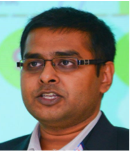 Soumya Kanti Datta (Presenter) is a Research Engineer in EURECOM, France and is working on French and European research projects. He has also co-founded Future Tech Lab, a startup working on IoT and smart city applications. His research focuses on innovation, development of next-generation technologies and standardization in Internet of Things, Machine-to-Machine Communication, Mobile Edge Computing, Mobile Applications and Computer Security. He is an active member of IEEE Consumer Electronics Society, its Future Directions Committee and IEEE Communication Society. He
Soumya Kanti Datta (Presenter) is a Research Engineer in EURECOM, France and is working on French and European research projects. He has also co-founded Future Tech Lab, a startup working on IoT and smart city applications. His research focuses on innovation, development of next-generation technologies and standardization in Internet of Things, Machine-to-Machine Communication, Mobile Edge Computing, Mobile Applications and Computer Security. He is an active member of IEEE Consumer Electronics Society, its Future Directions Committee and IEEE Communication Society. He
has published more than 40 research papers and articles in top notch IEEE Conferences, Magazines and Journals. Soumya has served as a Track Chair of ICCE 2015 and ICCE 2016, the flagship conference of IEEE CE Society and is serving on the Organizing Committee of WF-IoT 2016, the IEEE flagship conference on IoT. Apart from that he regularly volunteers for IEEE conferences, Journals in many capacities including TPC member, reviewer, session chair. He is a frequent participant of ETSI events and regularly gives tutorials and presentations on IoT at various events including ETSI and IEEE conferences. Currently Soumya is involved in oneM2M standards and W3C Web of Things Interest Group where he is leading the task force on Discovery and Provisioning and actively contributing to their standard development activities. He received his M.Sc. from Telecom ParisTech (EURECOM) in France.
Abstract – For most of the past 1,000 years, the storage of electrical energy has not changed. In just the past 20 years, the driving force of Mobile Devices, Electric Vehicles and Renewables for the Electric Grid has driven the market to create battery technologies that go well beyond what was thought possible. This market by 2030 will exceed Trillions of Dollars. This Tutorial will give an overview of what is happening as the world develops the next generation of Energy Storage for the Internet of Things. The Tutorial will break into two major parts. The first part will cover the types of available energy storage that are available for IoT devices. Particular attention will be made to small mobile energy storage devices that can be used in remote locations. The second part will describe the IoT applications that utilize mobile energy storage. Emphasis will be made on the selection of battery chemistries, packages, charging systems and applications that are required.
Back to Top
Monday 05 February 2018, 10.30-12.30 (2 hours), Rooms 4301A & 4301B
Tutorial 5: ComFlux: Dynamic Creation of Pervasive Applications from Plug-and-Play Modules
Contributors: Raluca Diaconu, Microsoft Research Ltd, Cambridge, UK,
Jean Bacon, Jie Deng and Jatinder Singh University of Cambridge, UK
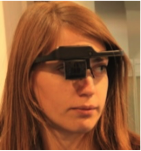 Raluca Diaconu (Presenter) is a Postdoctoral Researcher at Microsoft Research Cambridge in the Systems & Networking department where she is currently working on cloud storage technologies. Previously she held a Research Associate position at the Computer Laboratory, University of Cambridge working in the area of distributed computing for IoT. She worked with Jat Singh and Jean Bacon distributed IoT infrastructures for external management and control of pervasive components. Raluca obtained a PhD at Université Paris 6, Pierre et Marie Curie in partnership with Orange Labs with a thesis on cloud scalability for virtual and mixed reality worlds.
Raluca Diaconu (Presenter) is a Postdoctoral Researcher at Microsoft Research Cambridge in the Systems & Networking department where she is currently working on cloud storage technologies. Previously she held a Research Associate position at the Computer Laboratory, University of Cambridge working in the area of distributed computing for IoT. She worked with Jat Singh and Jean Bacon distributed IoT infrastructures for external management and control of pervasive components. Raluca obtained a PhD at Université Paris 6, Pierre et Marie Curie in partnership with Orange Labs with a thesis on cloud scalability for virtual and mixed reality worlds.
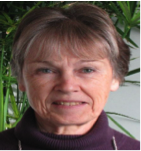 Jean Bacon is Professor Emerita of Distributed Systems at the University of Cambridge, Department of Computer Science and Technology (formerly The Computer Laboratory). She was the first woman to be appointed as a Lecturer there in 1985. She is an Emeritus Fellow of Jesus College Cambridge and a Director of Studies in Computer Science. She created and led the Opera Research Group, with focus on open, secure, large scale, widely distributed systems. She is a Fellow of the IEEE and was a member of the Board of Governors of the IEEE Computer Society 2000-2008.
Jean Bacon is Professor Emerita of Distributed Systems at the University of Cambridge, Department of Computer Science and Technology (formerly The Computer Laboratory). She was the first woman to be appointed as a Lecturer there in 1985. She is an Emeritus Fellow of Jesus College Cambridge and a Director of Studies in Computer Science. She created and led the Opera Research Group, with focus on open, secure, large scale, widely distributed systems. She is a Fellow of the IEEE and was a member of the Board of Governors of the IEEE Computer Society 2000-2008.
 Jie Deng is a PhD Student working on the network for distributed systems in Queen Mary University London. Prior to this, he was a research assistant at Dublin city university for 6 months, in the Ericsson-DCU collaboration project named E-Stream. He also finished his master degree in DCU with a 1st honor degree. Before came to DCU, he was also a master student at Beijing University of Posts and Telecommunications major in software engineering. Outside the research area, he also obtained on-field experience as a network engineer and passed many industry certifications such as CCIE, RHCE and JNCIS.
Jie Deng is a PhD Student working on the network for distributed systems in Queen Mary University London. Prior to this, he was a research assistant at Dublin city university for 6 months, in the Ericsson-DCU collaboration project named E-Stream. He also finished his master degree in DCU with a 1st honor degree. Before came to DCU, he was also a master student at Beijing University of Posts and Telecommunications major in software engineering. Outside the research area, he also obtained on-field experience as a network engineer and passed many industry certifications such as CCIE, RHCE and JNCIS.
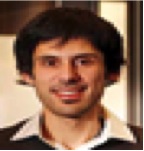 Jatinder Singh is an EPSRC Research Fellow at the Department of Computer Science & Technology (Computer Laboratory), University of Cambridge. His focus is the intersection of technology and law/regulation, considering issues such as security, privacy, transparency and accountability as it relates to emerging technology. He leads the newly formed “Compliant and Accountable Systems” research group at Cambridge, and is a Co-I of the Microsoft Cloud Computing Research Centre, a tech-legal collaboration with the Law School at Queen Mary, University of London. Jat is also active in the tech-policy space, serving on the UK’s Financial Conduct Authority’s Advisory Council on Analytics, and for several years on the Secretariat of the E-Infrastructure Leadership Council, a UK Government advisory council charged with developing the national e-infrastructure strategy. He holds a PhD from the University of Cambridge (2009), has several years of commercial software engineering and technical consulting experience in the judicial and healthcare domains, and has studied some law.
Jatinder Singh is an EPSRC Research Fellow at the Department of Computer Science & Technology (Computer Laboratory), University of Cambridge. His focus is the intersection of technology and law/regulation, considering issues such as security, privacy, transparency and accountability as it relates to emerging technology. He leads the newly formed “Compliant and Accountable Systems” research group at Cambridge, and is a Co-I of the Microsoft Cloud Computing Research Centre, a tech-legal collaboration with the Law School at Queen Mary, University of London. Jat is also active in the tech-policy space, serving on the UK’s Financial Conduct Authority’s Advisory Council on Analytics, and for several years on the Secretariat of the E-Infrastructure Leadership Council, a UK Government advisory council charged with developing the national e-infrastructure strategy. He holds a PhD from the University of Cambridge (2009), has several years of commercial software engineering and technical consulting experience in the judicial and healthcare domains, and has studied some law.
Abstract – ComFlux is a middleware that enables an external management regime, whereby component interactions, communication methods and security constraints can be dynamically defined, extended and updated at runtime – without requiring redeployment or changes to the application logic of the components themselves, and without imposing constraints on system design. ComFlux offers means to ‘instruct’ components how, when and with whom they should interact, taking into account usability, modularity and access control. The goal is to enable policy enforcement in highly distributed systems, such as the Internet of Things (IoT). The scope of this tutorial is to show the need for mechanisms enabling the external command and control of IoT components, in order to enable their usage in ways and by means not envisaged by their creators. The key benefit of this tutorial is to provide a practical demonstration of the potential for dynamic, external command and control capabilities, focusing on the flexibility, reliability, and usability of IoT components. ComFlux offers a management API to the developer and also opens up its reconfiguration layer externally to make it accessible by others. We demonstrate how to build applications dynamically using an open implementation of ComFlux. This tutorial will be divided in two parts. The first part will argue the necessity of an infrastructure for external management and the model that enables it. The second part will demonstrate how to build applications dynamically using an open implementation of ComFlux to control IoT devices.
Back to Top
Monday 05 February 2018, 16.00-18.00 (2 hours), Room 4203
Tutorial 6: Algorithms for Cooperative IoT: From Edge Computing to Smart Social Vehicles
Presenter: Seng W. Loke, IoT Research Group, School of Information Technology, Deakin University, Burwood, Melbourne, Australia
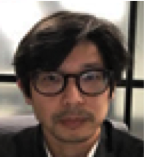 Dr. Seng W. Loke is Professor in Computer Science at the School of Information Technology in Deakin University. He founded and co-directs the Internet of Things Research Cluster at Deakin University. He is also an Adjunct Professor at the School of Engineering and Mathematical Sciences, La Trobe University, Australia, and an Adjunct Professor at the School of Business and Tourism, Southern Cross University, Australia. He authored “Context-Aware Pervasive Systems: Architectures for a New Breed of Applications” published by Auerbach (CRC Press), Dec 2006, and more recently authored “Crowd-Powered Mobile Computing and Smart Things” published by Springer, 2017. His research has mainly been in pervasive (ubiquitous) computing and mobile computing, Internet of Things (IoT), intelligent transport systems, focusing on issues concerning systems and information, with current emphases on complex (trusted and secure) cooperation among Things (including smart vehicles viewed as smart things), crowd-powered mobile computing, mobile Big Data, mobile Big Systems, the social impact of mobile technology innovation, Mobile/Physical Web/Cloud development, and how they might interact. He has authored and co-authored over 260 research publications, including papers in journals such as IEEE Transactions on SMC, IEEE Transactions on Intelligent Transportation Systems, IEEE Transactions on Cloud Computing, ACM Transactions on Embedded Computing Systems, IEEE Pervasive Computing, Pervasive and Mobile Computing, The Computer Journal, Mobile Networks and Applications, Personal and Ubiquitous Computing, Knowledge Engineering Review, Journal of Systems and Software, Knowledge and Information Systems, and Future Generation Computer Systems.
Dr. Seng W. Loke is Professor in Computer Science at the School of Information Technology in Deakin University. He founded and co-directs the Internet of Things Research Cluster at Deakin University. He is also an Adjunct Professor at the School of Engineering and Mathematical Sciences, La Trobe University, Australia, and an Adjunct Professor at the School of Business and Tourism, Southern Cross University, Australia. He authored “Context-Aware Pervasive Systems: Architectures for a New Breed of Applications” published by Auerbach (CRC Press), Dec 2006, and more recently authored “Crowd-Powered Mobile Computing and Smart Things” published by Springer, 2017. His research has mainly been in pervasive (ubiquitous) computing and mobile computing, Internet of Things (IoT), intelligent transport systems, focusing on issues concerning systems and information, with current emphases on complex (trusted and secure) cooperation among Things (including smart vehicles viewed as smart things), crowd-powered mobile computing, mobile Big Data, mobile Big Systems, the social impact of mobile technology innovation, Mobile/Physical Web/Cloud development, and how they might interact. He has authored and co-authored over 260 research publications, including papers in journals such as IEEE Transactions on SMC, IEEE Transactions on Intelligent Transportation Systems, IEEE Transactions on Cloud Computing, ACM Transactions on Embedded Computing Systems, IEEE Pervasive Computing, Pervasive and Mobile Computing, The Computer Journal, Mobile Networks and Applications, Personal and Ubiquitous Computing, Knowledge Engineering Review, Journal of Systems and Software, Knowledge and Information Systems, and Future Generation Computer Systems.
Abstract – Current technology trends including edge cloud computing, IoT and device mesh, crowd computing, the sharing economy, and collective computing, involve pooling together human and machine resources from crowds of devices and people in interesting ways, via relevant algorithms, in order to achieve better resource utilization and greater capabilities, on-demand. As things get connected, there is increasing opportunity for how they can connect, cooperate and collaborate, more than ever before. The tutorial will provide an overview of current technology trends and how computing with the cloud, the crowd and the Internet-of-Things are interacting, including algorithms for things and crowds cooperating. The following three concepts will be detailed: Crowd+Cloud Machines, Extreme Cooperation for IoT and Smart Vehicles, and Social Links for Crowds and Things. We will discuss and explore algorithms, techniques and paradigms for proactive edge computing, for crowd-computing, and for cooperative things (including, cooperative autonomous vehicles and how cooperation can facilitate parking search and routing to reduce traffic congestion). We will also explore current research in the above areas, and discuss social issues such as privacy and security, ethics and trust, as well as technical challenges and research directions. The tutorial will also aim to provide a forum for discussion about the future of cooperative autonomous IoT, especially when things are increasingly endowed with intelligence and automated decision-making capabilities.
Back to Top
Monday 05 February 2018, 10.30-12.30 (2 hours), Room 4303
Tutorial 7: Standardization Landscape in IoT, WoT and Smart Home
Presenters: Soumya Kanti Datta, EURECOM, France, Thinagaran Perumal, Universiti Putra, Malaysia
 Soumya Kanti Datta (Presenter) is a Research Engineer in EURECOM, France and is working on French and European research projects. He has also co-founded Future Tech Lab, a startup working on IoT and smart city applications. His research focuses on innovation, development of next-generation technologies and standardization in Internet of Things, Machine-to-Machine Communication, Mobile Edge Computing, Mobile Applications and Computer Security. He is an active member of IEEE Consumer Electronics Society, its Future Directions Committee and IEEE Communication Society. He has published more than 40 research papers and articles in top notch IEEE Conferences, Magazines and Journals. Soumya has served as a Track Chair of ICCE 2015 and ICCE 2016, the flagship conference of IEEE CE Society and is serving on the Organizing Committee of WF-IoT 2016, the IEEE flagship conference on IoT. Apart from that he regularly volunteers for IEEE conferences, Journals in many capacities including TPC member, reviewer, session chair. He is a frequent participant of ETSI events and regularly gives tutorials and presentations on IoT at various events including ETSI and IEEE conferences. Currently Soumya is involved in oneM2M standards and W3C Web of Things Interest Group where he is leading the task force on Discovery and Provisioning and actively contributing to their standard development activities. He received his M.Sc. from Telecom ParisTech (EURECOM) in France.
Soumya Kanti Datta (Presenter) is a Research Engineer in EURECOM, France and is working on French and European research projects. He has also co-founded Future Tech Lab, a startup working on IoT and smart city applications. His research focuses on innovation, development of next-generation technologies and standardization in Internet of Things, Machine-to-Machine Communication, Mobile Edge Computing, Mobile Applications and Computer Security. He is an active member of IEEE Consumer Electronics Society, its Future Directions Committee and IEEE Communication Society. He has published more than 40 research papers and articles in top notch IEEE Conferences, Magazines and Journals. Soumya has served as a Track Chair of ICCE 2015 and ICCE 2016, the flagship conference of IEEE CE Society and is serving on the Organizing Committee of WF-IoT 2016, the IEEE flagship conference on IoT. Apart from that he regularly volunteers for IEEE conferences, Journals in many capacities including TPC member, reviewer, session chair. He is a frequent participant of ETSI events and regularly gives tutorials and presentations on IoT at various events including ETSI and IEEE conferences. Currently Soumya is involved in oneM2M standards and W3C Web of Things Interest Group where he is leading the task force on Discovery and Provisioning and actively contributing to their standard development activities. He received his M.Sc. from Telecom ParisTech (EURECOM) in France.
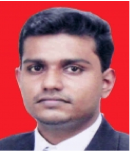 Thinagaran Perumal (Presenter) is a Senior Lecturer in the Department of Computer Science, Faculty of Computer Science and Information Technology, Universiti Putra Malaysia. Dr. Thina received his BEng in Computer and Communication Systems from UPM in 2003, and his M.S. and Ph.D.in Intelligent Systems from same university in 2006 and 2012, respectively. Thina’s research interests include embedded systems, Internet of Things (IoTs), smart homes and building automation, machine learning, robotics, smart cities, and ambient intelligence for smart environments. Thina is currently serving as Chapter Chair for the IEEE Consumer Electronics Society Malaysia Chapter.
Thinagaran Perumal (Presenter) is a Senior Lecturer in the Department of Computer Science, Faculty of Computer Science and Information Technology, Universiti Putra Malaysia. Dr. Thina received his BEng in Computer and Communication Systems from UPM in 2003, and his M.S. and Ph.D.in Intelligent Systems from same university in 2006 and 2012, respectively. Thina’s research interests include embedded systems, Internet of Things (IoTs), smart homes and building automation, machine learning, robotics, smart cities, and ambient intelligence for smart environments. Thina is currently serving as Chapter Chair for the IEEE Consumer Electronics Society Malaysia Chapter.
Abstract – The Internet of Things (IoT) has ushered another industrial revolution where every aspect of our lives become connected. Our homes, vehicles, healthcare, cities are set to benefit from the IoT. However, at its current state, the products and services in IoT do not interoperate with each other. This creates data, product and security silos and consumers do not get the true benefit of IoT. This tutorial will highlight the current IoT ecosystem, industrial services and consumer products. Then we will provide an in-depth analysis of lack of interoperability leading to market silos. Standard Development Organizations around the world are working to create sustainable IoT standards to address the market fragmentation. The evolution of IoT in the Web of Things (WoT) will be discussed in this context. IEEE P2413, oneM2M IoT architecture and W3C WoT specifications will be discussed. Among industrial alliances, OCF, OMA LwM2M and Zigbee 3.0 will be described. Smart Home is an important vertical in the IoT. Role of IEEE and relevant standards will be covered.
Back to Top
Monday 05 February 2018, 16.00-18.00 (2 hours), Room 4204
Tutorial 8: Mobile Edge Cloud: Opportunities and Challenges
Presenter: Sayed Chhattan Shah, Dept. of Information Communication Engineering, Hankuk University of Foreign Studies, South Korea
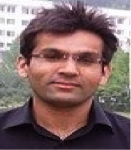 Sayed Chhattan Shah is an Assistant Professor of Computer Science in the Department of Information Communication Engineering at Hankuk University of Foreign Studies Korea. He is also Director of Mobile Grid and Cloud Computing Laboratory. His research interests lie in the fields of parallel and distributed computing systems, mobile computational clouds and cyber physical systems. He received his Ph.D. in Computer Science from Korea University in 2012 and his M.S. in Computer Science from National University of Computer and Emerging Sciences in 2008. Prior to joining HUFS, he was a Senior Researcher at the Electronics and Telecommunications Research Institute South Korea and Engineer at the National Engineering and Scientific Commission Pakistan. He also held faculty positions at Seoul National University of Science and Technology, Korea University, Dongguk University, Hamdard University and Isra University. Shah is an Editor of IEEE Internet Initiative and Associate Editor of Information Processing Systems. He has served as the Conference Chair and on program committees of various international conferences. He is a senior member of IEEE, and a member of IEEE Communications Society, International Telecommunication Union, Korean GNSS Society, and International Association of Engineers.
Sayed Chhattan Shah is an Assistant Professor of Computer Science in the Department of Information Communication Engineering at Hankuk University of Foreign Studies Korea. He is also Director of Mobile Grid and Cloud Computing Laboratory. His research interests lie in the fields of parallel and distributed computing systems, mobile computational clouds and cyber physical systems. He received his Ph.D. in Computer Science from Korea University in 2012 and his M.S. in Computer Science from National University of Computer and Emerging Sciences in 2008. Prior to joining HUFS, he was a Senior Researcher at the Electronics and Telecommunications Research Institute South Korea and Engineer at the National Engineering and Scientific Commission Pakistan. He also held faculty positions at Seoul National University of Science and Technology, Korea University, Dongguk University, Hamdard University and Isra University. Shah is an Editor of IEEE Internet Initiative and Associate Editor of Information Processing Systems. He has served as the Conference Chair and on program committees of various international conferences. He is a senior member of IEEE, and a member of IEEE Communications Society, International Telecommunication Union, Korean GNSS Society, and International Association of Engineers.
Abstract – In mobile edge cloud, multiple mobile and stationary devices interconnected through wireless local area networks are combined to create a small cloud infrastructure at a local physical area such as home. Compared to traditional mobile distributed computing systems such as mobile cloud, mobile edge cloud introduces several complex challenges due to the heterogeneous computing environment, heterogeneous and dynamic network environment, node mobility, and limited battery power. The real time requirements associated with internet of things and cyber physical system applications make the problem even more challenging. In this tutorial, we will discuss the applications and challenges associated with design and development of mobile edge cloud system and an architecture based on a cross layer design approach for effective decision making.
Back to Top


